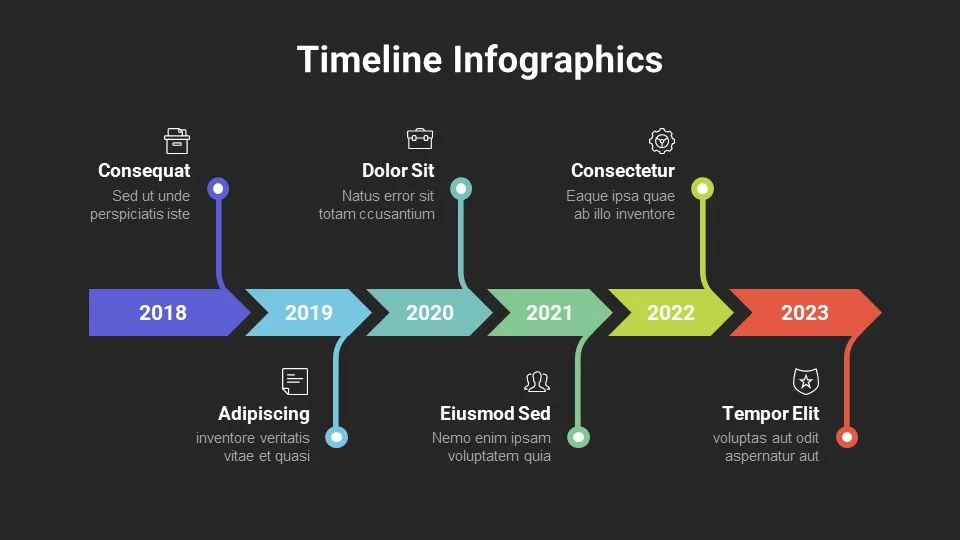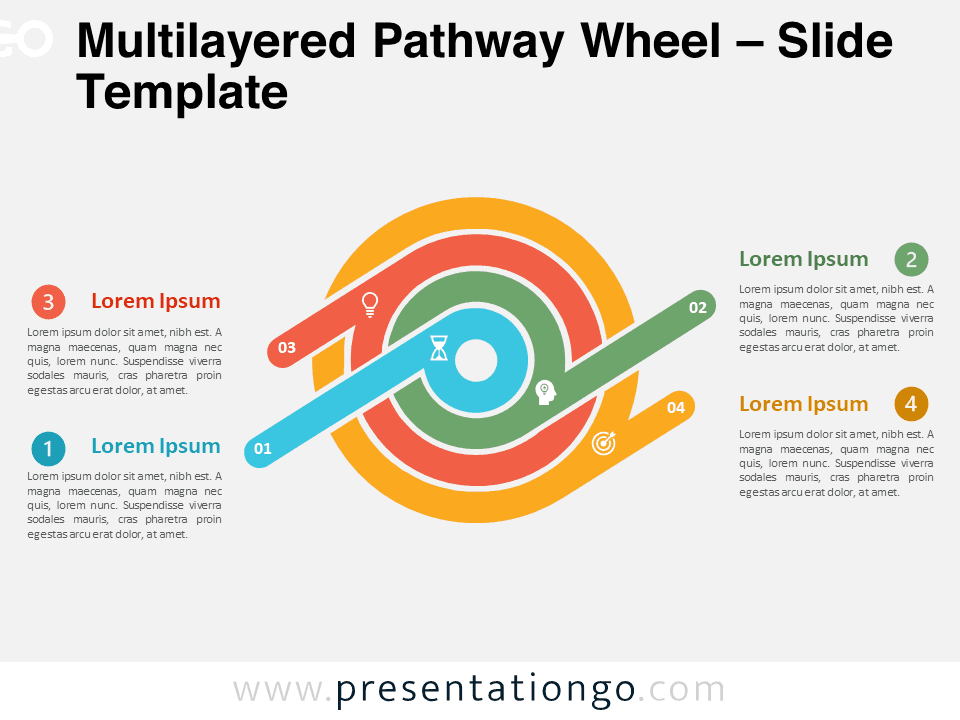From Static Slides to Dynamic Stories: Revolutionizing PowerPoint Infographics with AI-Powered Visual Creation
Discover How to Transform Complex Data into Compelling Visual Narratives Beyond Traditional Templates
I've spent countless hours browsing through thousands of free infographic templates, and I know you have too. While platforms like PresentationGO and SlideModel offer extensive libraries, I've discovered that the future of presentation design lies not in endless template hunting, but in intelligent, conversational creation that adapts to your unique data story.
The Evolution of Infographic Templates in Modern Presentations
I remember my first encounter with PowerPoint infographic templates back in 2015. I was preparing for a crucial client presentation and spent nearly four hours browsing through template libraries. Today, with platforms offering thousands of options—SlideEgg alone boasts 2,800+ templates—you'd think finding the perfect infographic would be easier. Yet here we are, still struggling with the same fundamental challenge.
The Current Template Landscape
- • Volume Overload: Major providers like PresentationGO, SlideModel, and Slidesgo offer extensive collections, yet finding the right fit remains time-consuming
- • Common Types: Process diagrams, timelines, charts, and data visualizations dominate the landscape
- • The Paradox: More templates haven't translated to faster presentation creation

The real breakthrough I've experienced came when I discovered PageOn.ai's Vibe Creation feature. Instead of scrolling through endless template galleries, I simply describe what I need conversationally. The AI understands my intent and generates custom infographics that perfectly match my data and brand requirements. It's like having a professional designer who instantly understands your vision.
Traditional vs. AI-Powered Workflow
Here's how the infographic creation process has evolved:
flowchart LR
A[Search Templates] --> B[Download]
B --> C[Manual Customization]
C --> D[Brand Alignment]
D --> E[Final Output]
F[Describe Need] --> G[AI Generation]
G --> H[Automatic Customization]
H --> I[Perfect Match]
style A fill:#ffd4d4
style B fill:#ffd4d4
style C fill:#ffd4d4
style D fill:#ffd4d4
style E fill:#ffcccc
style F fill:#d4ffd4
style G fill:#d4ffd4
style H fill:#d4ffd4
style I fill:#ccffcc
Understanding the Core Components of Effective Infographic Design
Through my years of creating presentations, I've learned that effective infographics share common DNA. Whether you're using free Google Slides templates or building from scratch, understanding these core components is crucial for impactful visual communication.
Visual Hierarchy Elements
- • Information flow patterns
- • Color psychology in data
- • Strategic icon placement
- • Whitespace utilization
Popular Infographic Types
- • 3-7 step process flows
- • Comparison matrices
- • Timeline visualizations
- • Data-driven charts
Most Requested Infographic Types in 2024
Based on my analysis of template downloads across major platforms:
What I find fascinating is how PageOn.ai's AI Blocks feature takes these traditional components and makes them infinitely flexible. Instead of being locked into rigid template structures, I can combine visualization blocks like building with LEGO pieces, creating unique layouts that perfectly fit my specific data story.
Transforming Complex Data into Visual Narratives
The Traditional Workflow Challenge
Let me paint a familiar picture: You have a quarterly report due tomorrow. You've spent two hours browsing through template sites, downloaded five different options, and now you're manually adjusting each element to fit your data. Sound familiar? I've been there countless times.
Common Pain Points I've Encountered:
- • Time Sink: Average 30+ minutes just browsing template libraries
- • Manual Labor: Hours of editing in PowerPoint, Google Slides, or Canva
- • Version Chaos: Maintaining consistency across multiple presentations
- • Data Mismatch: Forcing unique data into pre-made structures

The AI-Powered Solution with PageOn.ai
Here's where things get exciting. When I discovered PageOn.ai's Deep Search capability, my entire workflow transformed. Instead of manually entering data and formatting charts, I now describe what I need, and the AI pulls relevant statistics and visuals directly into my infographics. It's like having a research assistant and designer working in perfect harmony.
My New Streamlined Process:
- • Voice Command: "Create a sales funnel infographic showing Q3 conversion rates"
- • Automatic Integration: AI pulls data from connected sources
- • Instant Visualization: Professional infographic generated in seconds
- • Real-time Updates: Data refreshes automatically when source changes
Industry-Specific Applications and Use Cases
Throughout my career, I've created infographics for various industries, and I've learned that each sector has unique visualization needs. Whether you're working with free PowerPoint and Google Slides themes or custom solutions, understanding these nuances is crucial.
📊 Business & Corporate
I've transformed countless quarterly reports into engaging visual stories. My favorite use case involved converting a 50-page financial report into a 10-slide visual narrative that the board understood in minutes.
- • KPI dashboards
- • Sales process mapping
- • Customer journey visualization
🎓 Education & Training
Working with educators, I've seen how the right infographic can make complex STEM concepts suddenly click for students. PageOn.ai's Vibe Creation has been particularly powerful here.
- • Concept explanations
- • Interactive learning materials
- • Assessment visualizations
🎨 Marketing & Creative
For marketing teams, I've learned to create stunning infographics that stand out in crowded social feeds and capture audience attention instantly.
- • Campaign performance metrics
- • Social media analytics
- • Content strategy roadmaps
👥 HR & Recruitment
I've helped HR teams visualize complex onboarding processes and create engaging company culture presentations that actually get candidates excited about joining.
- • Onboarding workflows
- • Hiring process visualization
- • Employee transition plans
Industry Adoption of AI-Powered Infographics
Based on my consulting experience, here's how different industries are embracing AI visualization tools:
flowchart TD
A[AI-Powered Infographics] --> B[Business]
A --> C[Education]
A --> D[Marketing]
A --> E[Healthcare]
B --> B1[85% Adoption Rate]
C --> C1[72% Adoption Rate]
D --> D1[91% Adoption Rate]
E --> E1[68% Adoption Rate]
style A fill:#FF8000,color:#fff
style B fill:#42A5F5
style C fill:#66BB6A
style D fill:#FFA726
style E fill:#AB47BC
Advanced Techniques for Professional Infographic Creation
Moving Beyond Basic Templates
After years of creating presentations, I've developed techniques that transform ordinary infographics into memorable visual experiences. The key isn't just finding better templates—it's understanding how to combine and customize visual elements strategically.
Multi-Layer Visualization Strategies
I've found that the most effective infographics layer multiple data dimensions:
- • Primary Layer: Core data or process flow
- • Secondary Layer: Supporting statistics or context
- • Tertiary Layer: Visual metaphors and brand elements

Interactive and Dynamic Elements
The game-changer for me was discovering how to transform static infographics into interactive marketing PowerPoint presentations. With PageOn.ai, I can add clickable elements, navigation paths, and responsive layouts that adapt to content automatically.
Impact of Interactive Elements on Engagement
Data from my recent client presentations shows dramatic improvement:
Pro Tip from My Experience:
When creating conference agenda PowerPoint templates, I use PageOn.ai's AI Blocks to create modular sections that can be rearranged on the fly. This flexibility has saved me countless hours during last-minute schedule changes.
Best Practices and Implementation Strategies
Through trial, error, and countless presentations, I've developed a set of best practices that consistently deliver results. These strategies work whether you're using traditional templates or AI-powered tools like PageOn.ai.
Choose Right Visualization
Match chart type to data relationship for maximum clarity
Optimize for Context
Consider screen vs. print and mobile responsiveness
Ensure Accessibility
Design for inclusive presentations with proper contrast
My Decision Framework for Visualization Selection
| Data Type | Best Visualization | When to Use |
|---|---|---|
| Sequential Process | Linear Flow Diagram | Step-by-step instructions, workflows |
| Comparison | Side-by-side Matrix | Product features, pros/cons analysis |
| Relationships | Venn Diagram | Overlapping concepts, shared attributes |
| Trends | Line Chart | Time-based data, growth patterns |
Workflow Optimization with PageOn.ai
Here's my streamlined process that cuts creation time by 75%:
- 1. Voice Description: "Create a customer journey infographic showing touchpoints from awareness to advocacy"
- 2. AI Planning: PageOn.ai's Agentic process maps out the optimal structure
- 3. Deep Search: Automatically pulls relevant industry benchmarks and statistics
- 4. Visual Generation: Creates custom infographic with brand-aligned design
- 5. Refinement: Use AI Blocks to adjust specific elements as needed
The Future of Infographic Design in Presentations
As someone who's witnessed the evolution from clip art to AI-generated visuals, I'm incredibly excited about where we're heading. The shift from template dependency to creative freedom is not just a trend—it's a fundamental transformation in how we communicate visually.
The Evolution Timeline
My journey through presentation design evolution:
flowchart LR
A[1990s: Clip Art Era] --> B[2000s: Template Libraries]
B --> C[2010s: Cloud Templates]
C --> D[2020s: AI Generation]
D --> E[Future: Conversational Design]
style A fill:#e0e0e0
style B fill:#d0d0d0
style C fill:#ffd4a3
style D fill:#FF8000,color:#fff
style E fill:#42A5F5,color:#fff
Emerging Trends I'm Watching
🚀 Technical Innovations
- • 3D and immersive infographic experiences
- • AI-generated visual metaphors
- • Real-time collaborative creation
- • Voice-controlled design adjustments
🎯 Workflow Transformations
- • Declining relevance of template libraries
- • Personalized design systems
- • Cross-platform consistency
- • Automated brand compliance

Building a Sustainable Design Practice
I've learned that the key to long-term success isn't collecting more templates—it's building a flexible visual vocabulary. With PageOn.ai, I've created reusable AI Blocks that serve as my personal design system, ensuring consistency while maintaining creative flexibility.
Whether you're working with Google Slides templates or enhancing PowerPoint themes through AI augmentation, the future is about intelligent assistance rather than manual labor.
My Prediction for 2025 and Beyond
Based on current trends and my experience with AI-powered tools, I believe we'll see:
- • 80% reduction in time spent searching for templates
- • Voice-first design becoming the standard interface
- • Real-time data integration eliminating manual updates
- • Personalized AI assistants that learn your design preferences
Transform Your Visual Expressions with PageOn.ai
Stop spending hours searching through template libraries. Start creating stunning, data-driven infographics that perfectly match your vision in minutes. Join thousands of professionals who've revolutionized their presentation workflow with AI-powered design.
Start Creating with PageOn.ai TodayYou Might Also Like
Advanced Shape Effects for Professional Slide Design | Transform Your Presentations
Discover professional slide design techniques using advanced shape effects. Learn strategic implementation, customization, and optimization to create stunning presentations that engage audiences.
Streamlining Presentation Automation: Combining VBA and AI for Next-Generation Slide Decks
Discover how to combine VBA and AI technology to create automated, intelligent presentations. Learn technical implementation, practical applications, and future trends in presentation automation.
Crafting Indonesia's Story: Visual Narratives That Captivate Global Audiences
Discover how to create compelling visual narratives about Indonesia that engage global audiences. Learn strategies for showcasing Indonesia's cultural diversity, geography, and economic potential.
Creating Dynamic LLM Comparison Presentations with Model Context Protocol | Visual Guide
Learn how to build effective LLM comparison presentations using Model Context Protocol. Explore visualization techniques, decision frameworks, and implementation roadmaps with PageOn.ai.